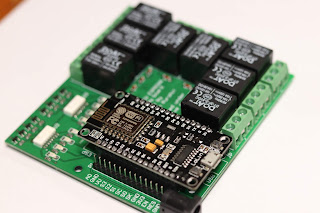DIY PVC gimbal head for long telephoto lenses
This is another DIY stuff which I made just out of the parts available off the shelf.
Please note all the steps might not be explained properly here, because it has been months since I made it and writing now as I remembered, what all I have done that time. Feel free to comment or contact on the mail if you want to make one for yourself. I will try to explain the doubts if you have.
Also, make sure to comment and share if you like it.
So it goes back in April 2018, when I bought my first DSLR, Canon EOS 200D with both the kit lenses. I wanted to buy a prime lens and skip the telephoto lens which comes bundled with a camera, but a friend came for rescue and removed this thought from my mind. Forever grateful to you Gaurav, for this. Many photos captured, with me realizing the importance of zoom lens especially for birding and Astrophotography.
For birding, the struggle is real. You have to maintain distance and also get a good photo at least not the frame, which you can anytime crop and adjust. As I discovered more, I felt the need to buy a good telephoto lens, in my budget. Ok so next is I bought it in April 2019. I bought Sigma 150-600mm Contemporary for Canon. I am using the lens and till now there is no issue.
Where is the gimbal then?
After using the lens for around 6-7 months, I started to feel the weight is heavy and when the birding went to little next level, it was necessary to sit at one point and wait for birds, rather than going behind them.
It was always difficult to mount such a long lens on a tripod because the mounting on the lens is not balanced with the centre of gravity. The front element of the lens being heavier than the rest of the body, its difficult to mount on a standard tripod, may it be ball head tripod even. So it was clear you need gimbal head. Started watching many videos, disassembly videos, to see what all components are inside. I even rented a gimbal for 2 days, without actually using it just to get a feel how does it feel to use one.
Next was to make it work. There were two options, either design and get it machined, which was costlier of course. The other was to make yourself in PVC pipe. The second option was chosen as it was cheaper and I will be describing here how it was done
Parts required--
2 x PVC Tee
1 x PVC bend
1 x Connector
4 x 6200ZZ bearings
2 x arca swiss mount or any mount plate.
1 x needle roller bearing (Thrust bearing)
4 x M6 screws
2 x machined centre shafts
2 x small Aluminum plate for locking
1 x Thumb screw for rotation axis
The PVC fittings were 3/4th inch all. So to make the bearing fit inside them you have to file the Tee conenctors uniformly to 30mm ID. (slightly less then the bearings will be tight fit.)
I don't have the photos of the steps which I carried out for this but some photos will help to understand the design.

You can see the bearing inserted in the Tee.
Next is making the centre shaft for fixing it to tripod and rotation.
the shaft design is posted below.

All the dimensions are in mm.
Be careful not to fix both the bearings in the PVC Tee simultaneously. If you do so, you will not be able to insert the shaft. The bore diameter is 10mm, the shaft is little more than that and knurled on the lathe for the tight fix. The shaft is made of aluminium at a lathe shop near SP road, Bangalore. The cost was around 400 Rs for two pieces. and the guy really made it well.
Next part is the measurement from camera mounting hole. Then fix the pipes with PVC cement. Fix them properly and keep for drying. Make sure they are at right angle.
This photo shows the locking mechanism for both axes. It is similar for both. The plate is Fixed to PVC by 2 x M4 screws and a centre tapped hole is used for thumb screw. It tightens on the machined shaft and holds it in place from rotating.

Before fixing the bottom Tee, make sure to check the length from the camera mounting to the edge of the bend, if it is too short, you might hit the camera while fixing.

This is completed version. With the bottom plate and two mounting plates which were purchased from Amazon are attached. The left one is for adjusting the height and right one for adjusting it back and forth for weight.
On the left, (not seen in photo) there is needle roller bearing for keeping it stationary at one point while using.
Finally I stitched neoprene camouflage for gimbal and the next photo is completed assembly

The link to youtube video. The video is made after carefully aligning all the bearings
Buttersmooth gimbal


Awesome brother 👌👏
ReplyDeleteAwesome brother 👌👏
ReplyDeleteGreat! And in proper manner 👍
ReplyDeleteGreat! And in proper manner 👍
ReplyDeleteGreat! And in proper manner 👍
ReplyDelete